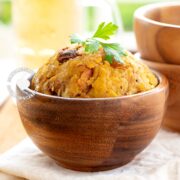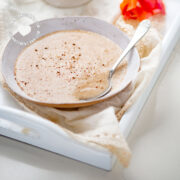"What are the most important Dominican foods?" I should start by saying that "important" might not be the right word. Perhaps "popular", or "common" might be better. We get this question a lot. I hope that this introduction to Dominican cuisine will satisfy your curiosity and stir your appetite.
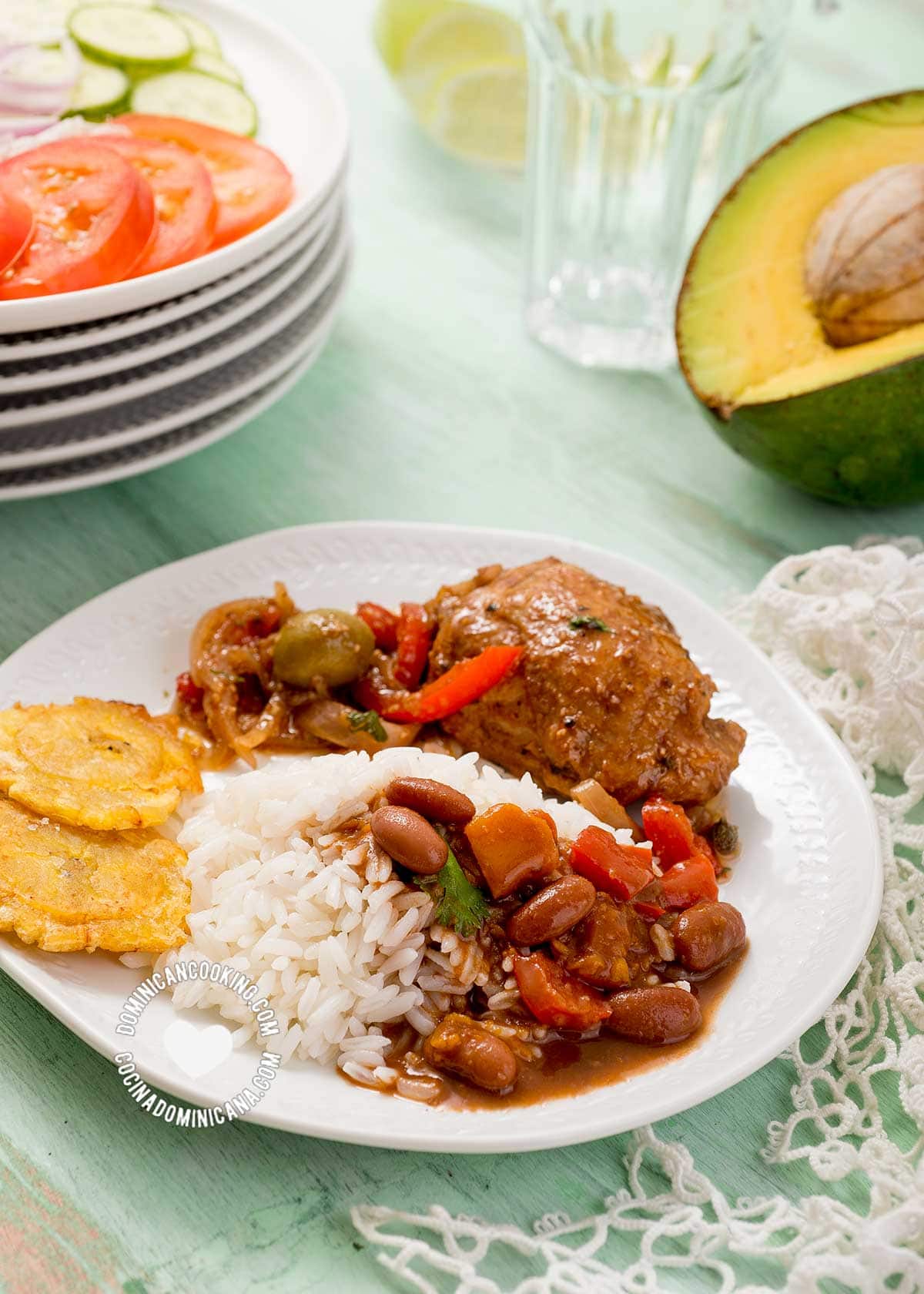
Let's start by saying that Dominican cuisine is rich and vast, and while we have a lot in common with other countries in Latin America, there are many dishes that are uniquely Dominican.
There will be a mix of both types here.
Must-try Dominican dishes
This is not even a comprehensive list of Dominican dishes, but it's a start if you want to learn a little bit about our cuisine. And if you want to learn more, or are doing this for homework, dig in, there are hundreds of recipes and articles on our blog.
To start my list I've picked some authentic Dominican foods and recipes that you MUST try, and I simplified the task by just picking the top ten most-searched Dominican recipes in our blog.
Sancocho (7-Meat Stew)
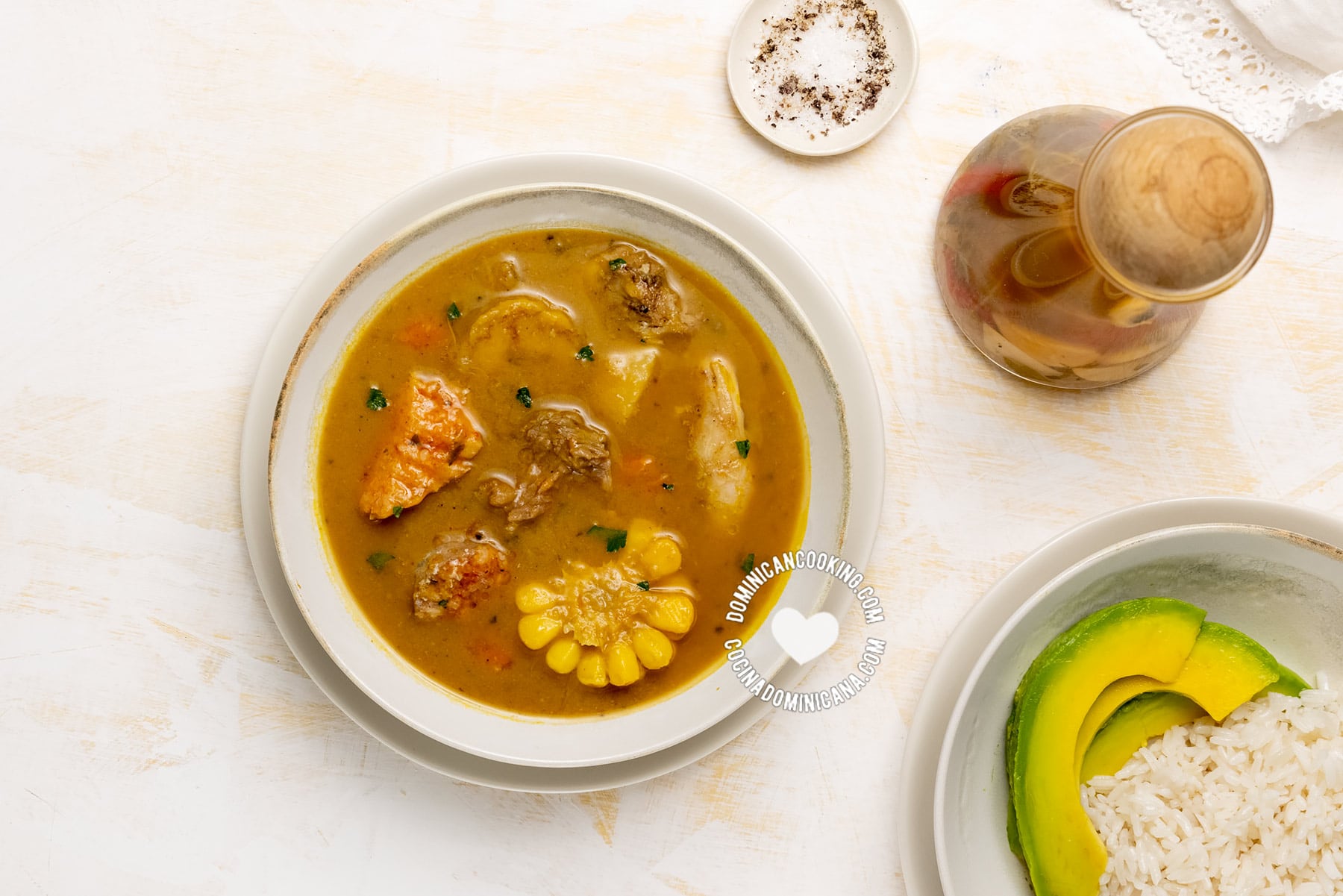
Is this the King of Dominican Foods? More on that thought later. In the meantime, the word "sancocho" (never "salcocho", please!) used to refer to a meaty stew is not only found in the Dominican Republic. Several Latin American countries have sancochos, but they are not all the same. Each of these countries has its own version.
Dominican Sancocho may come in a deluxe version: Sancocho de Siete Carnes, in which seven different types of meat from four types of animals (pork, beef, chicken, and goat meat) are mixed with root vegetables, herbs, spices, and plantain to produce a very rich, thick, meaty stew, unlike anything you've tried before. The simplified version might contain just beef and perhaps chicken.
Sancocho is typically served alongside Arroz blanco, some slices of avocado, and a local hot sauce called Agrio de naranja.
Did you know?
Ingredients vary from home to home and from cook to cook, but there should never be noodles or tomato sauce in Sancocho.
Mangú (Plantain Mash)
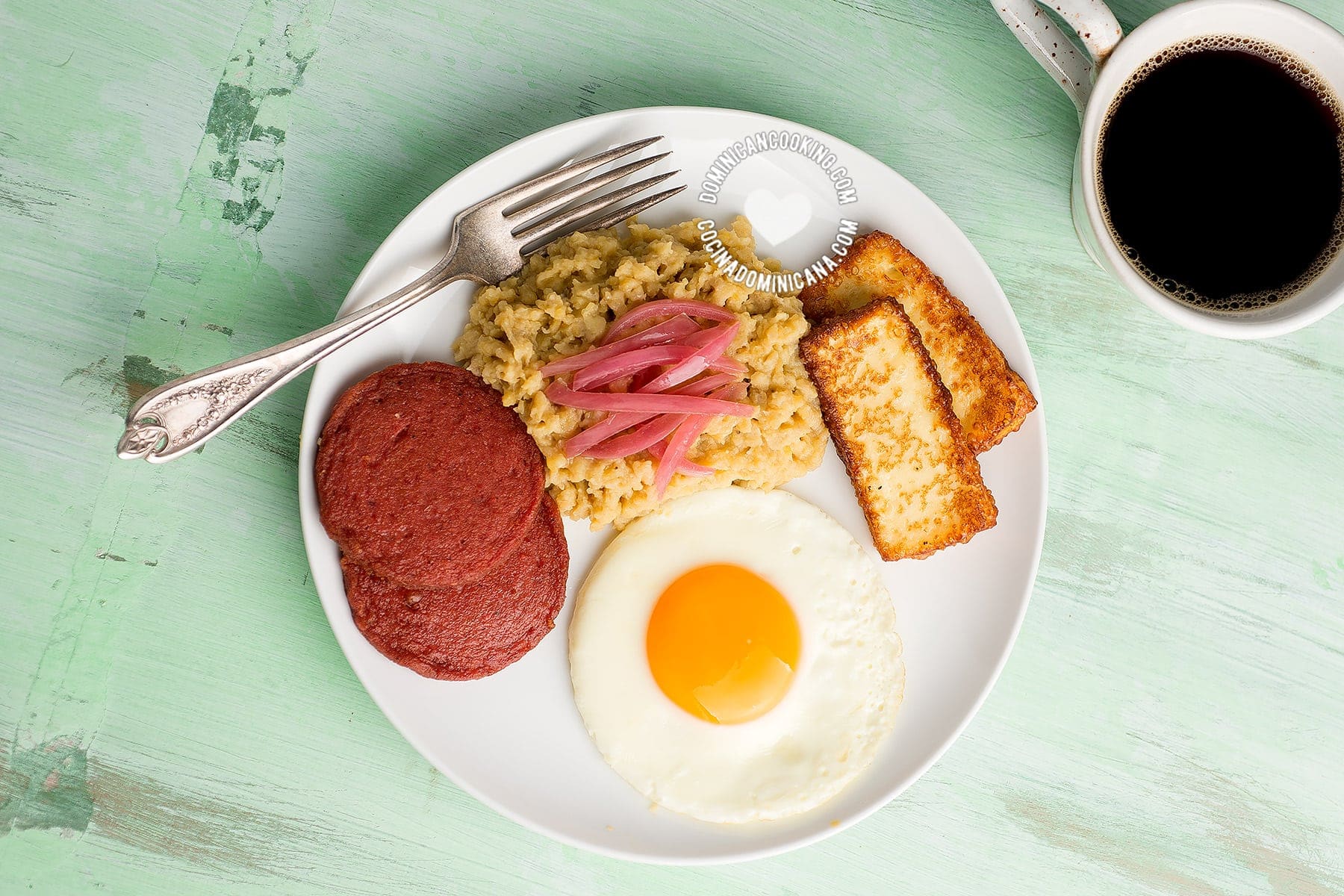
Unlike many of our top dishes, mangú is a uniquely Dominican food; it is a very popular dish consisting of mashed green plantains, usually served with Dominican sauteed red onions, and with a side of fried eggs, fried Dominican salami, and Queso Frito (fried cheese). Served together they are known as Los Tres Golpes (The Three Strikes). It is mainly served as a breakfast dish, and sometimes it appears on the dinner table. This is sure to start some controversy, but mangú with los tres golpes has my vote for the national dish of the Dominican Republic.
Don't be fooled by cute explanations about the origin of the word. All evidence points to an African origin.
Did you know?
We also sometimes use the word mangú to refer to any puréed vegetable (like Mangú de yautía).
Arroz Blanco (White Rice)
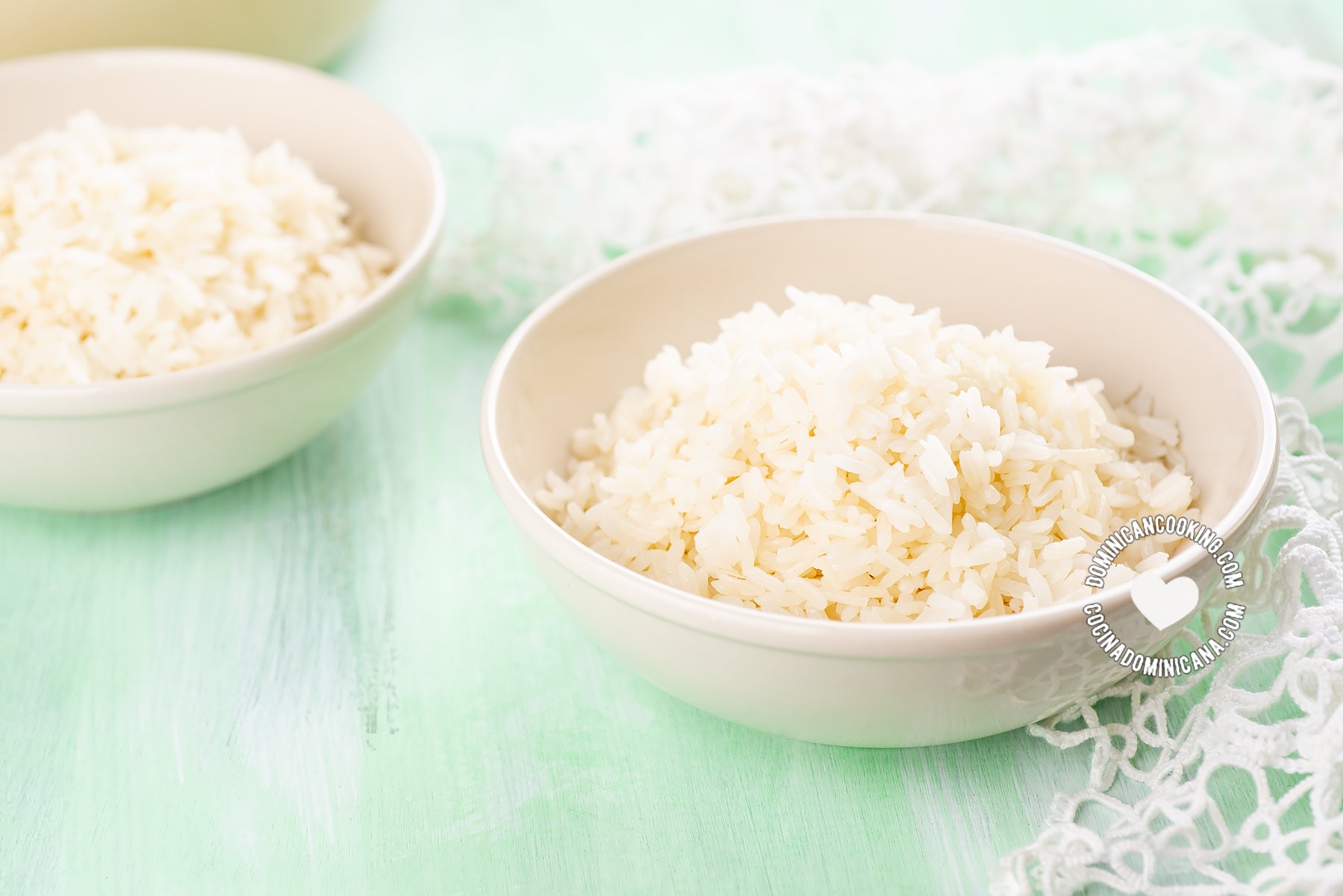
Rice is the main staple of Dominican cuisine. There is a great number of Dominican rice dishes, but none more common, or more important than Arroz blanco. It is also the base of La Bandera Dominicana (the Dominican flag), the so-called traditional Dominican lunch meal consisting of white rice, Habichuelas Guisadas (stewed beans), Pollo Guisado or Res Guisada (braised chicken or beef), and salad. A good Arroz Blanco is the final test of the competent Dominican cook. The rice should be "graneado", that is, cooked-through but firm, with grains completely separate from each other.
Did you know?
Good Dominican rice produces a layer of crispy, golden rice we call Concón, and we love it!
Habichuelas Guisadas (Stewed Beans
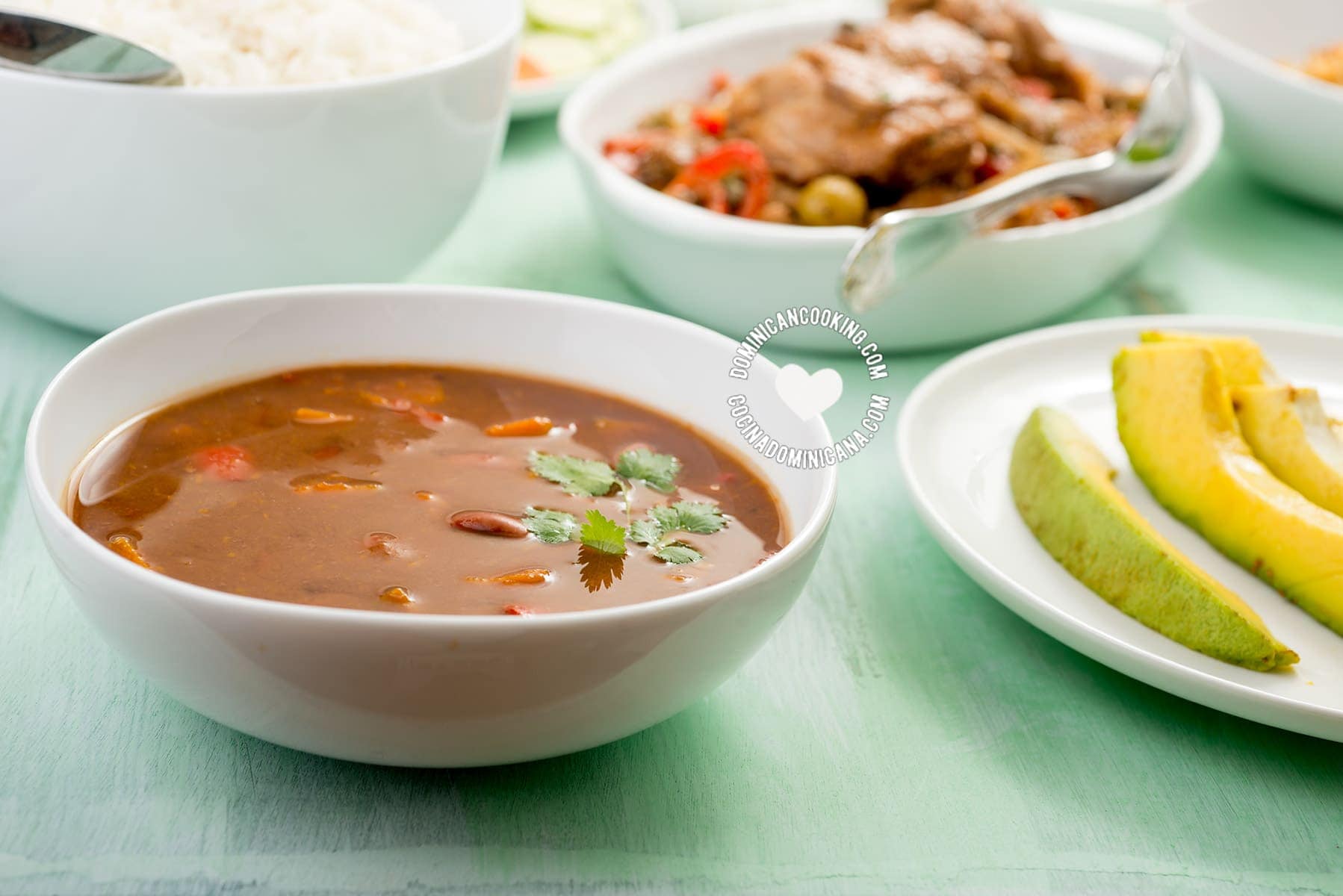
A cheap, abundant source of protein, beans are very common in Latin American and Caribbean cuisine, and the Dominican Republic is no exception. They are a staple of Dominican cuisine.
Habichuelas guisadas is typically made with red kidney beans, pinto, or cranberry beans, and is served with rice dishes, most commonly with Arroz Blanco. Habichuelas is one of the four corners of the Dominican Flag (the traditional Dominican lunchtime meal). Each Dominican home may have its own version, with small changes in ingredients and seasonings, each proclaiming theirs "the best".
Did you know?
In my region of the Dominican Republic, thyme is a must in beans, but it's not that common elsewhere.
Pollo Guisado (Braised Chicken)
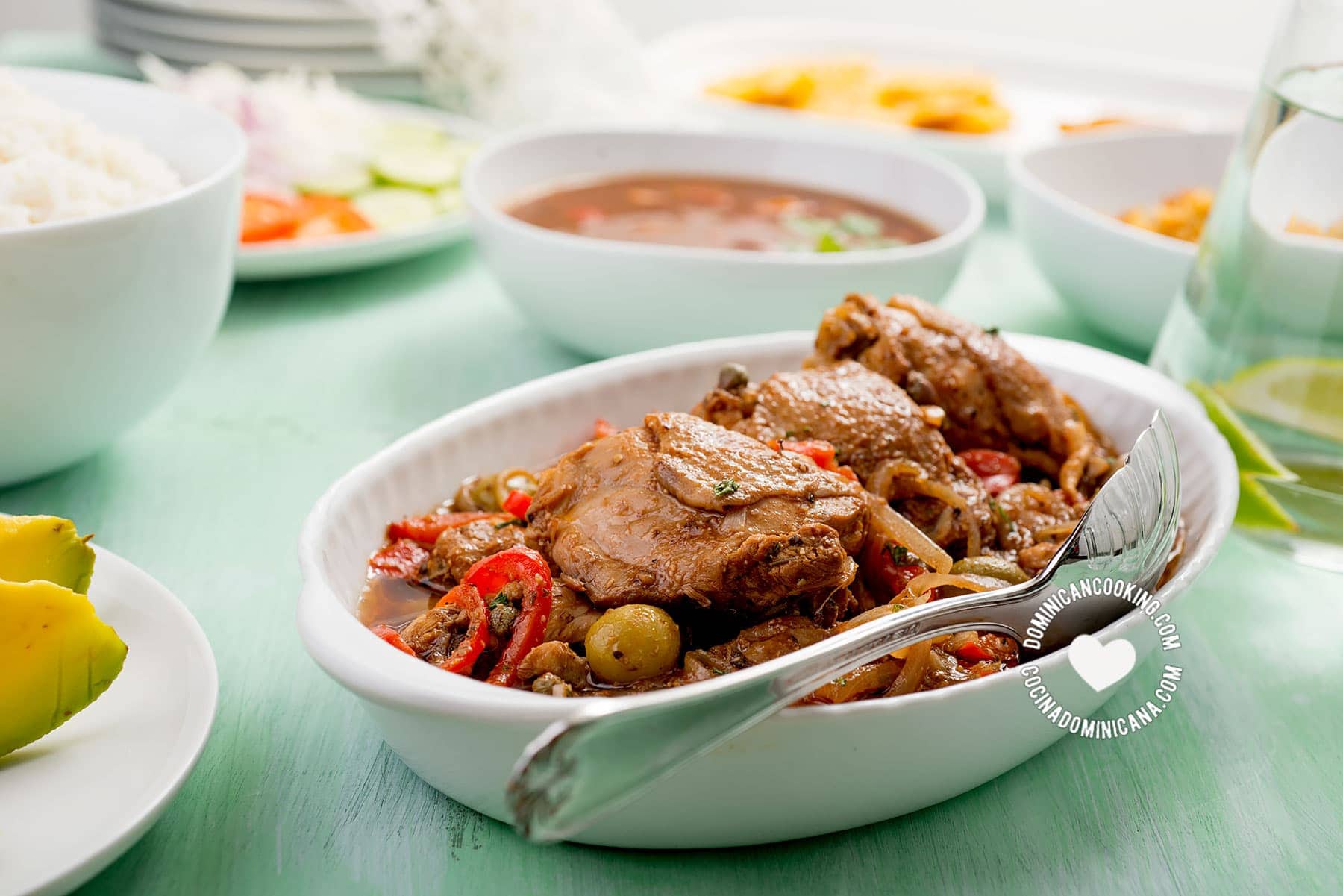
Chicken is abundant, easy and quick to cook, and inexpensive. No wonder it is one of the most popular meats in the Dominican Republic. And if you haven't tried Pollo guisado you have missed a lot by not tasting this fall-off-the-bone chicken, with strong flavors and an amazing sauce. Chicken is usually one of the parts of the traditional Dominican lunch menu.
Did you know?
We love all parts of the chicken, including gizzards, necks, and feet. The last two together are commonly referred to as "pico y pala" (pickaxe and shovel).
Ensalada Verde (Green Salad)
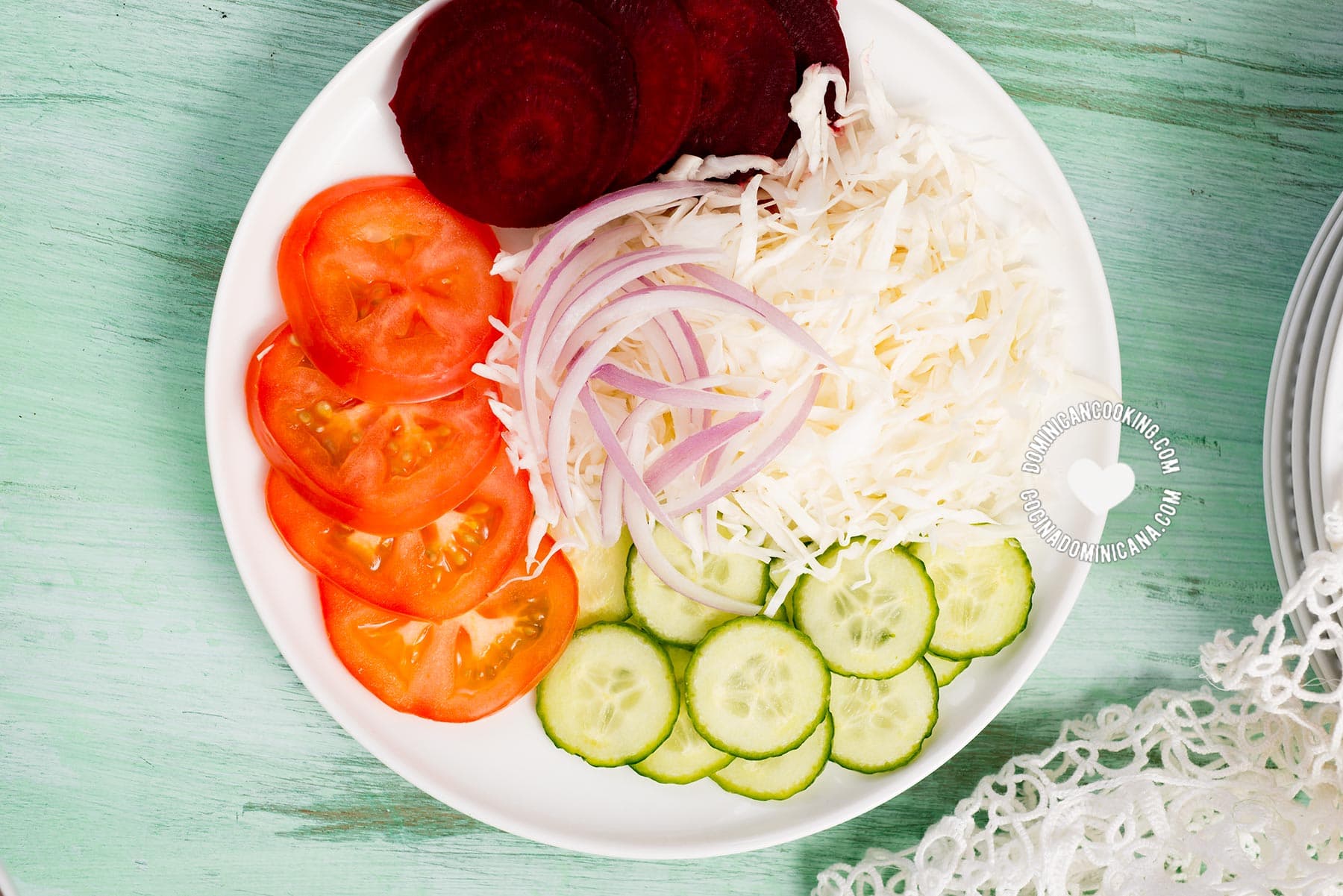
Even in the most humble countryside fonda (mom 'n' pop restaurant), you will be served a salad with your meal. There are a lot of variations of Ensalada verde, some using lettuce as the base, some using shredded cabbage. Tomatoes are always a must and other elements like onions, cucumber, boiled beets, bell pepper, and radish may be added.
Did you know?
Some people sprinkle a bit of sugar on the boiled beetroots when served in ensalada verde.
Tostones (Twice-Fried Plantains)
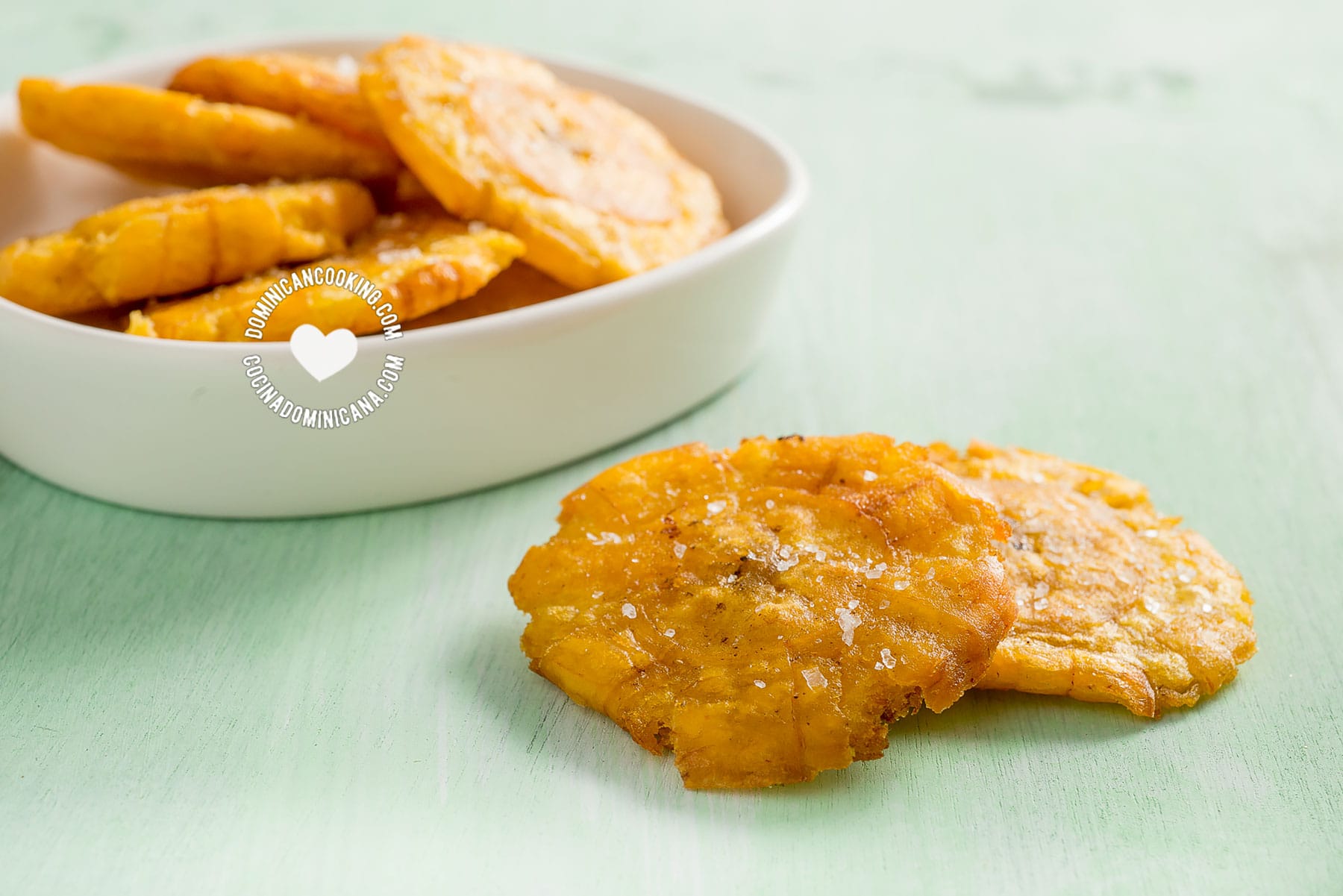
Tostones is another Dominican food we share with several other Latin American countries, but it holds a special place on the Dominican table. Tostones are made from unripe plantains and served as a side dish to meat and fish dishes, or as part of a larger meal.
I have yet to encounter one Dominican who doesn't love Tostones, and if you try them you'll see why. We eat tostones the same way French fries are served in countries where potatoes are preferred, and they can be found in fancy restaurants or as street food. There's nothing like crispy tostones sprinkled with salt and dipped in our tasty Mayoketchup sauce.
Did you know?
Tostones are also known as "fritos verdes" (fried greens) in the Dominican Republic.
Habichuelas con Dulce (Sweet Cream of Beans)
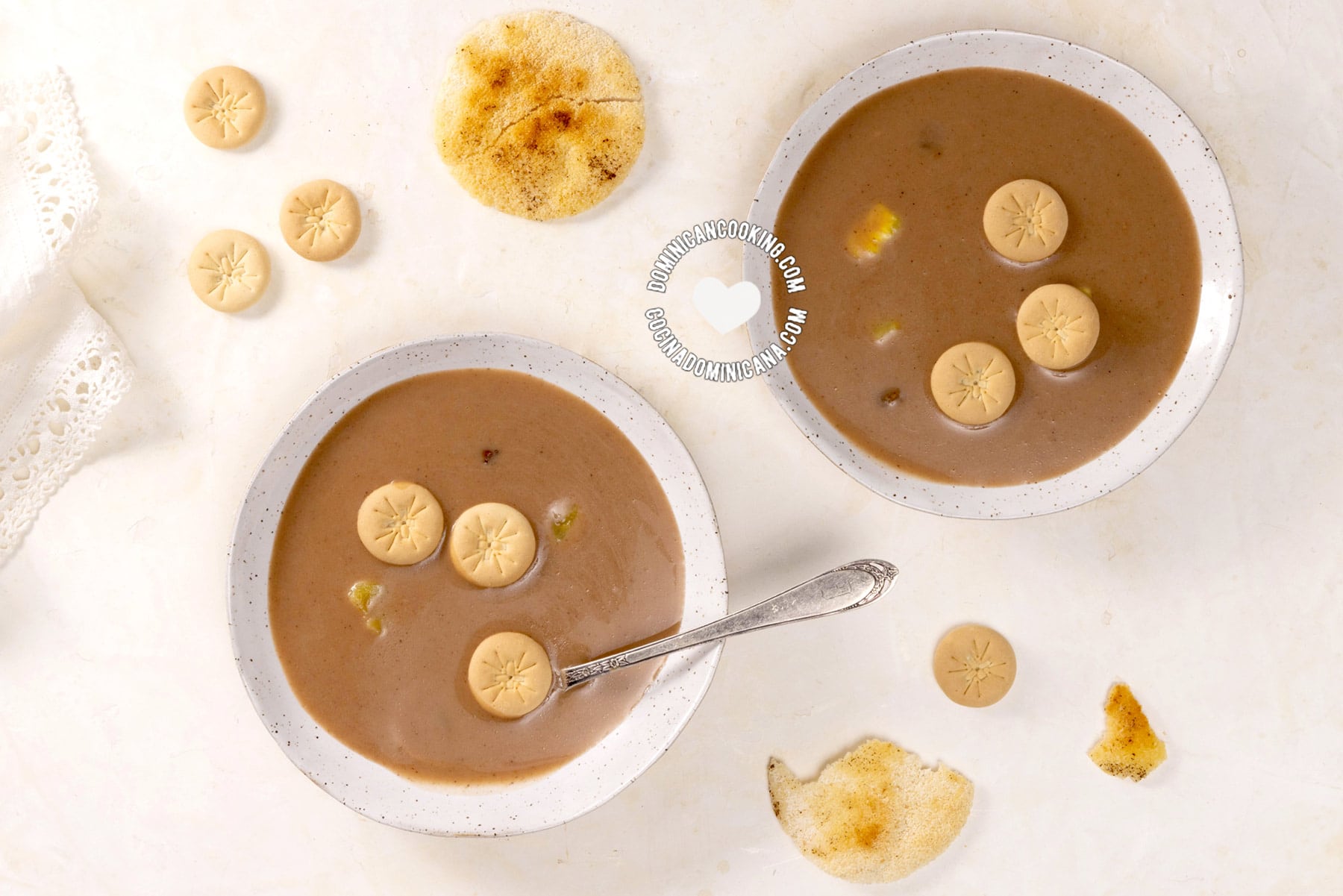
This uniquely Dominican dish is an important tradition in the Dominican Republic, and it's one of the most popular Dominican foods. It is served each year during the Lenten period, made in large quantities, and shared with family and friends.
Habichuelas con Dulce is one of those dishes with a different recipe for each family, each swearing theirs is the best, and the choices of spice combinations are dizzying: cinnamon, cloves, nutmeg, and many others depending on the cook and home. Our recipe gives you several options to adapt it to your own taste. And if you've never tried it, and think a bean-based dessert is strange, open your mind - you're likely to love it.
Did you know?
In some parts of the country (including my home region) Habichuelas con dulce is served alongside toasted Casabe (a Taino cassava bread).
Bizcocho Dominicano (Dominican Cake)

Bizcocho Dominicano, or Dominican Cake is possibly one of our most popular dishes. It is the center of many Dominican celebrations, from weddings to birthdays. This is just not any cake, its buttery, airy texture, combined with the traditional pineapple filling and flavored with vanilla and orange juice will test your baking skills. But if you get it right, you'll ask yourself how you lived without it this far.
Each town has one or more "maestros pasteleros" (master bakers) and each will have their fans that prefer their particular cake style.
Did you know?
The traditional meringue icing – not to be confused with merengue, our national music –that is used in Dominican cake is called Suspiro, which means "sigh" in Spanish.
Morir Soñando (Milk and Orange Drink)
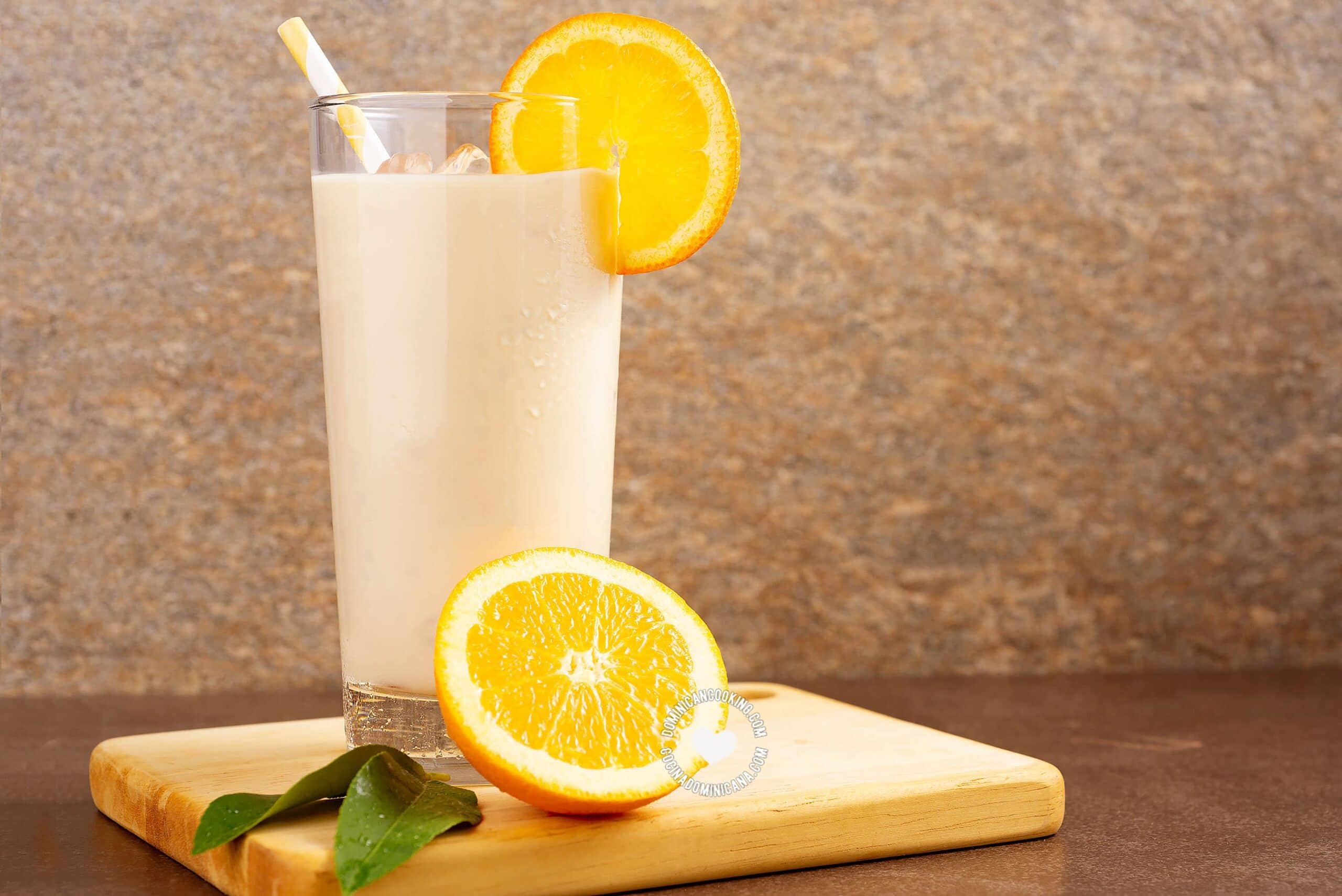
Orange (or china, as we also call it) and milk are not ingredients that are usually combined in drinks, but this delicious and nutritious beverage that combines evaporated milk and orange juice has a very poetic name. Morir soñando can be translated as "to die dreaming", and it is uniquely Dominican and by far our most popular drink. It is served as a refreshment, a snack, or to accompany sandwiches for a light meal.
There are other citrus juices that can be used instead of orange juice; lime juice, and bitter orange juice are also very popular options.
Did you know?
The trick to stopping the milk from curdling when mixed with any citrus juice is to keep it ice-cold.
All our traditional Dominican recipes
Do you want to see more? Some more popular dishes to check are Chivo guisado (the oregano-rich goat meat, and flagship of my region's cuisine), Pasteles en hoja (similar to tamales, and a must for Christmas), Empanadas (without which no party is complete), Arroz con leche (the wonderful Dominican rice pudding), arepa (our cornmeal, raisins, and coconut milk cake), Mofongo (the garlic-flavored fried plantain mash), Quipes or kipes (the Dominicanized version of kibbeh), and Pescado frito (the beach day seafood of choice). And for a newcomer to the scene, try Yaroa (Dominican loaded fries with mayonnaise and ketchup).
Or check the complete collection of traditional Dominican foods recipes.
It was very hard to pick just 10 dishes; after all, there are many more dishes that are almost or nearly as popular. If you have a different list of ten, I'd love to hear it. Please share it in the comments.
If you're doing homework
You'll find that we've introduced almost every recipe with additional information about its history and the cultural context around it. Usually, we include citations and references when necessary.
Read more
- About Dominican cuisine - History and origins
- Middle Eastern influences in our cuisine (with Kibbeh recipe)
- Cocolo culture and foods (with Guavaberry recipe)
- Chinese influence in our cuisine (with Chofan recipe)
- La Bandera Dominicana (our traditional Lunch meal)
- Los Tres Golpes (Dominican breakfast)
- Regional cookery of the Dominican Republic
- Traditional Dominican Drink Recipes - Complete Guide
- Articles about our culinary culture

Published Sept 06, 2001, and last revised



